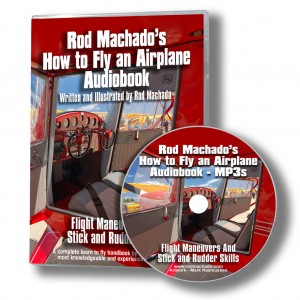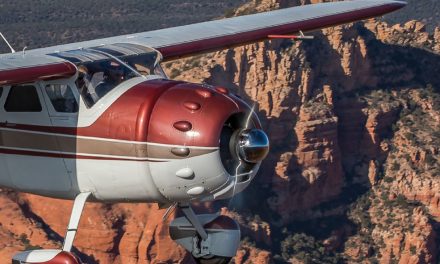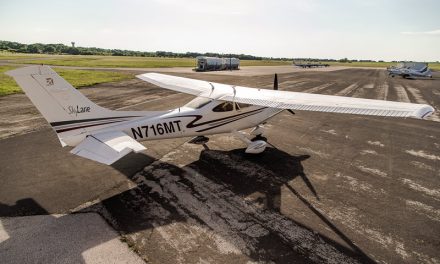 When I was learning to fly back in the 1960s, Wolfgang Langewiesche’s seminal book, Stick & Rudder, and William Kershner’s series of aviation training manuals were the standards by which other systems were measured. And they were good—perhaps even great.
When I was learning to fly back in the 1960s, Wolfgang Langewiesche’s seminal book, Stick & Rudder, and William Kershner’s series of aviation training manuals were the standards by which other systems were measured. And they were good—perhaps even great.
Bill Kershner had a light, breezy style of explaining the eccentricities of aviation, and Langewiesche could make any subject understandable with his simple examples and clear definitions. They didn’t preach as if the rest of us were idiots (a common failing of some instruction manuals). I studied both writers’ works extensively and used Kershner’s manuals regularly for reference as I worked my way through the commercial, instrument, and multi-engine tickets.
Later, in the 1970s, when I was editor of an aviation magazine for several years, I had the pleasure of buying freelance articles from Bill Kershner and felt privileged to do so. Bill was as adept at scribing short descriptions of flying techniques as he was at writing books—not too surprising since he was an accomplished military pilot, instructor, charter pilot, aerobatic expert, etc.
Along the way, I also read Richard Taylor, Bob Buck, Guy Murchie, Gordon Baxter, Ernie Gann and, of course, Richard Bach, aviation’s modern poet (who never instructed, but certainly taught). In short, I’d learn from anyone who had something to teach me about the sky, and that was (and remains) practically everyone.
Most of those heroes are gone now, but a new generation has risen to take their place. Rod Machado is at the leading edge of this latter group, and his instruction books on the various aspects of learning to fly are some of the most readable and entertaining you’ll ever encounter.
I met Rod in the early 1980s when we were both contracted, along with TWA captain and author, Barry Schiff, to write and host stories on the TV series, ABC’s Wide World of Flying. Rod took on the task of performing a series of video articles on flight safety subjects as diverse as perfecting the instrument scan, handling vacuum pump or propeller failure, flying the dreaded NDB approach, performing a winter preflight, avoiding mid-airs, understanding airspace, making proper tie-downs, dealing with faulty gas caps, and a variety of other subjects.
With his natural talent for explaining most anything related to aviation, Rod handled them all without missing a beat. He’s a relaxed, comfortable speaker with a casual, engaging manner that lends itself to demystifying complex subjects, and his talent came across well in the ABC show.
In contrast, my job on the show was comparatively easy. I was assigned to flight test a variety of aircraft, from Bonanzas, Mooneys, and Super Decathlons to Cessna 310s, TBM-700s, and Aerostars—stories that ABC labeled their “Left Seat Checkouts.”
More recently, Rod has turned his attention to writing books on a subject he knows better than anyone else I can think of—learning to fly. So far, he has turned out eight books and his latest effort is titled, strangely enough, How to Fly an Airplane. It’s filled with wisdom, drawings/photographs, and sometimes amusing ASRS reports, interspersed with personal anecdotes from Rod’s 10,000 hours and 40 years of flight instructing—quite an accomplishment for a pilot who is only 48!
This latest effort is Machado’s eighth book, and it was four years in the making. Rod did it all himself – writing, graphics, layout, photos – pretty much everything. Rod even went to the extreme of creating his own series of cartoon characters to help illustrate his points and then drew them himself!
Rod’s laurels are almost too numerous to mention, but he’s a National Aviation Safety Counselor who has taught literally hundreds of FAA instructor revalidation clinics, and he was Western Region Flight Instructor of the Year in 1991. You may also recognize him as the instructor on Microsoft Flight Simulator. Additionally, Machado writes regular columns in the AOPA‘s two monthly publications, AOPA Pilot and Flight Training.
The subtitle of the new book is “Flight Maneuvers and Stick and Rudder Skills,” and Rod explains early on that this book is dedicated to developing the ability to fly the airplane by your senses rather than relying on automation, GPS, or traditional IFR tools.
Rod received his early flight training at Amelia Reid Aviation in San Jose, California, where the emphasis was on flying by vision, hearing, touch, and smell rather than autopilots or any other form of automation. The instruments were regarded as backups rather than primary tools. His instructors were mostly ex-WWII fighter pilots who were adamant that the best way to stay alive in the sky was to “feel” the airplane, in every sense. The stakes may not be quite so high when there’s no one shooting at you, but there’s little question pilots who fly by “the seat of their pants” have a better handle on stick and rudder skills.
That’s exactly what Rod teaches in his new book. Machado acknowledges this is not a basic text in the strictest sense. Though the material doesn’t demand any significant background in flying – a student pilot or ATP has much to learn from Machado’s clear explanations – Rod hopes his new book will help you appreciate that there is more than one “right way” to fly an airplane.
How to Fly an Airplane is a full inch thick in an 8½ x 11-inch format containing roughly 500 pages and profusely illustrated with plenty of color charts, photos, and diagrams. I read several chapters on challenging subjects and leafed through the entire book, and I couldn’t find a page without one (more often two or three) graphic illustrations to help Rod make his points.
He delivers his lessons with the same enthusiasm he brings to his presentations before audiences of pilots all over the U.S. and Europe. Just as he sells flying to audiences of aviators at venues such as Oshkosh, AOPA, and Sun ‘n Fun, the author incorporates a sense of humor in his writing that helps lighten the sometimes serious subject of learning to fly.
Rod’s wife, Diane Titterington, a commercial and instrument pilot herself, did the cover layout and handles the updates on many of Rod’s books. She also manages the business side of the family’s publishing company, the Aviation Speakers Bureau.
As it happens, my wife, Peggy, a veterinarian who’s been researching complex medical subjects for 30 years, is a new Private Pilot who’s still exploring the exciting, entry-level world of aviation (she teaches me something new every time we fly). Peggy has read much of Rod’s new book and commented, “I only wish he’d published this two years ago when I was working on my license. It enhances and solidifies many of the lessons I learned – painfully – when I was studying for the written and trying to understand what I’d be forced to contend with in the flight test. His material focuses on the hands-on aspects of flying and helps you concentrate on the most important parameters of flight training.”
I have every book that Rod has written on my bookshelf alongside the works of Taylor, Buck, Langeweische, Kershner, and Murchie, and when I have any question about aviation training or technique, I’ll usually find what I need in one of Machado’s texts. Whatever your question, How to Fly an Airplane probably has the answer.
For more information, contact Rod through his website at www.rodmachado.com or call the Aviation Speakers Bureau at 1-800-437-7080.





